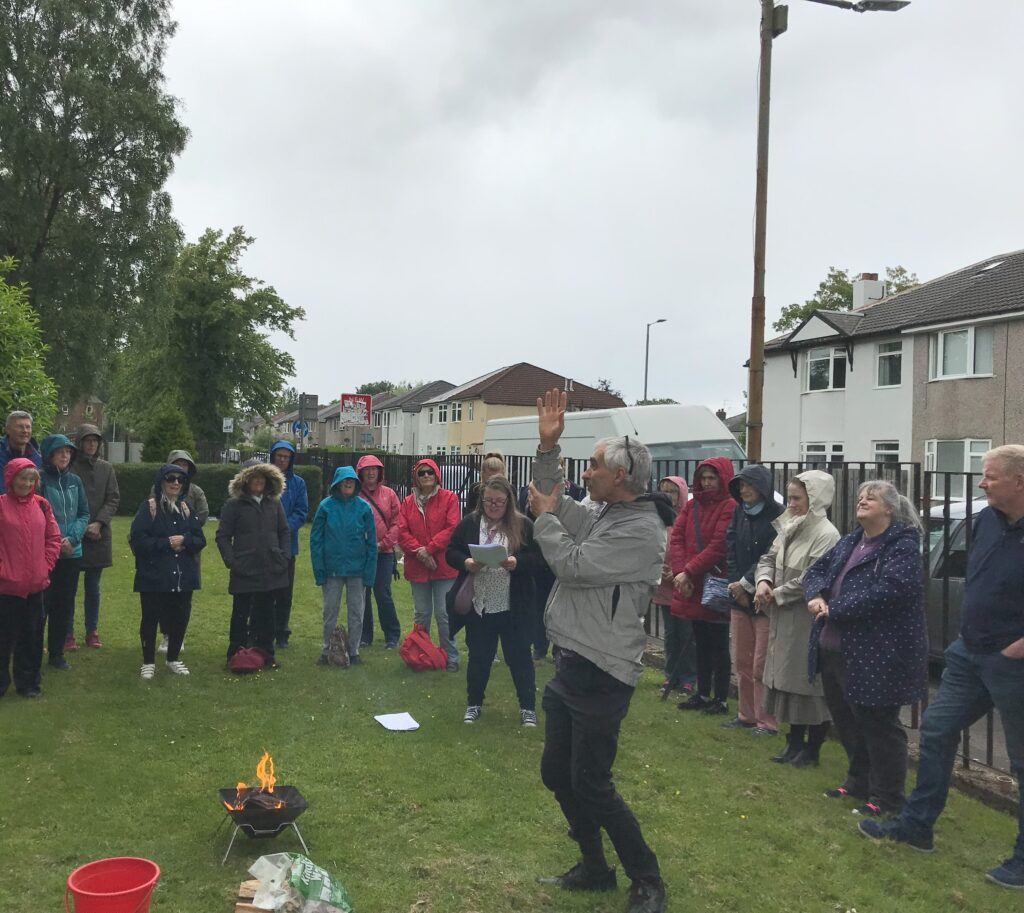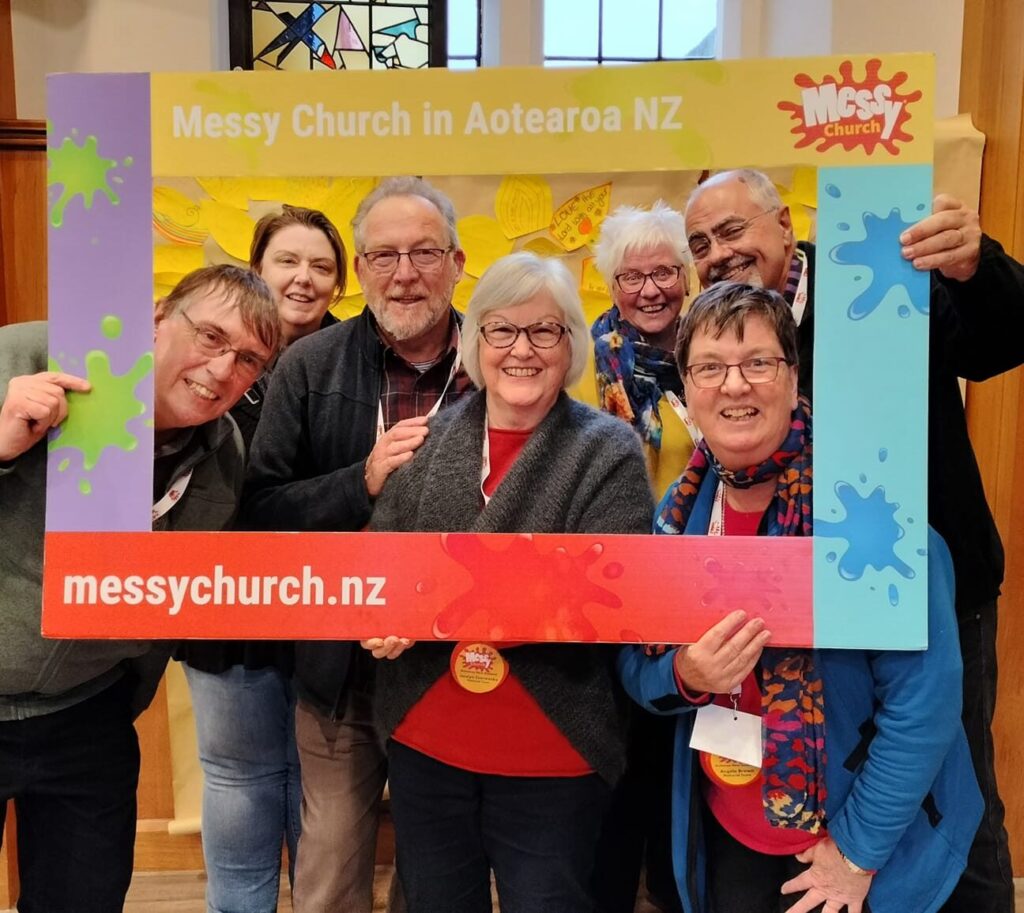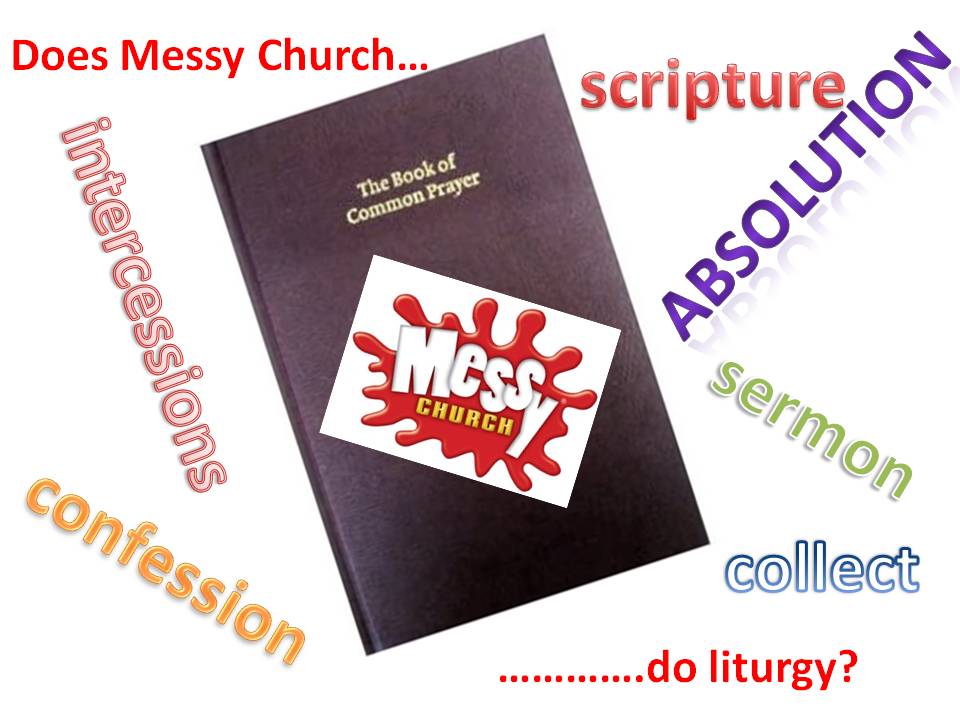I was interviewed this afternoon by Radio 4. The topic: what’s the point of The Prayer Book? The question: does Messy Church use The Prayer Book and does it have a liturgy? It’s hard to judge how well the interview went – it all was over in 10 minutes! – and anyway they may not even use my contribution, but it did get me thinking.
Now among the many Messy Churches I have visited, I have not yet come across one that uses The Prayer Book!! No surprise there! However I do wonder, particularly among those churches with a liturgical tradition, how much some leaders may have been unconsciously influenced by Cramner’s phrases and patterns in how they help their Messy Church congregations come close to God. And there’s nothing wrong with that!
However, when it comes to liturgy, that’s a broader question and of course it depends what you mean by liturgy. There is certainly structure and order to most Messy Church services or sessions as they move, noisily but purposefully, from welcome to creativity, from gathered story, prayer and songs, to shared meal and on to a farewell. You could perhaps argue that Messy Church is worship at its most interactive, conversational, intergenerational and hospitable best; but is this liturgy?
Where, you may ask, are the usual milestones that are found in The Prayer Book – namely bidding, confession, absolution, collect, scripture reading, sermon, intercessions and blessing? Are we missing something; or doesn’t it matter?
In fact I believe that all the above traditional stages of worship can be found in Messy Church if you look for them! But, as is the nature of Messy Church, they have been re-imagined and expressed afresh for our age. For example: surely the very name ‘Messy Church’ is a public announcement to all that we are but ‘miserable sinners’, who have messed up our own lives and whose lives have been messed up by others. Then, isn’t the extravagant welcome we give in Messy Church and our ongoing hospitality surely the receiving of God’s absolution, experienced very physically by all who come, just as the runaway son was embraced by the father, so God’s people embrace and forgive our guests in the name of the One who died on the cross for all and who turns no one away.
And isn’t our gathering around the tables to explore with all our senses the Bible story surely both Bible reading and exposition of scripture and our ‘collect moment’ comes when we gather to celebrate that story together, supported by songs and prayers. Many Messy Churches include The Grace at some point with actions and some are beginning to use a simple signed version of The Lord’s Prayer too. And then comes the meal – our feast together – which surely is our messy sacramental moment. whether it includes the breaking of bread or not (and indeed why shouldn’t it?) And finally we say farewell with news, birthday celebrations perhaps, and a further chance to bless each other with as much hospitality at the end of our session as we showed at the beginning.
These two hours of messy worship offer a liturgical framework for us to come close to each other, to come close to God and for God to come close to us, just as in any traditional church service. For some it leads to a deepening of faith through messy service; for others it is the first steps in faith as they encounter God’s people and God’s love for them in a safe place; and for yet others it is an opportunity to come and see for themselves what being church might look like and hopefully to discover that it isn’t as frightening or as irrelevant as they had feared.
Messy Church is giving people not used to church, or faith or our Christian story, a new liturgical language to come close to God and it is working. In a way we’re doing just what Cranmer back in the 16th century did when his Prayer Book helped people understand what was going on and not to feel so distant from the ‘hocus pocus’ of worship that was in a language they did not understand. Cranmer crafted beautiful phrases for his day and these have fed and sustained Christendom well, but times have changed and many in our post-Christian western world need a new language that will do the same thing.
Messy Church is helping shape a new liturgy for the 21st century – a liturgy whose legacy won’t necessarily be poetic words but rather a new way of being church that is as much concerned with the non-verbal, the relational and with meeting Jesus in the lives of those who love him as much as it was with set prayers and liturgical actions.
So maybe there is messy liturgy after all and each Messy Church is working it out for itself as God grows this new way of being church.
You may also like

Reuben on Resources…
15th Jul 2024
When football and faith collide
11th Jul 2024As you might have guessed from last week’s Facebook live, I love sport, in particular football and F1 so it’s been quite a few days! When faith and football collide, that makes me very happy!

Dr Dave’s Messy Adventure
9th Jul 2024How do you begin to encompass in a few words a trip lasting 4 weeks, across two vast counties and three time zones, as well at least three different climates.


